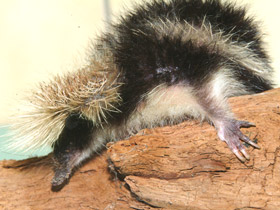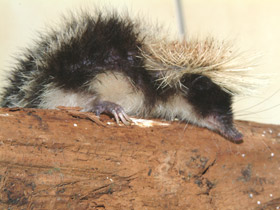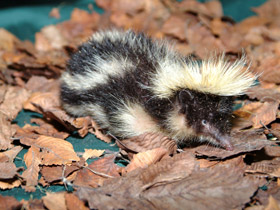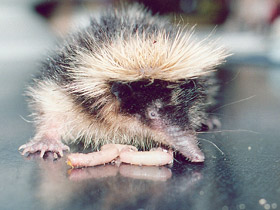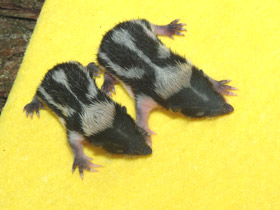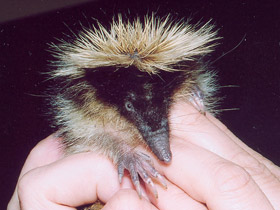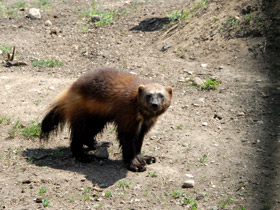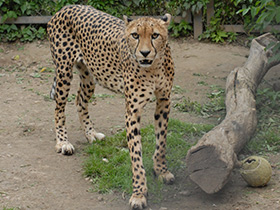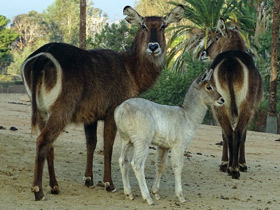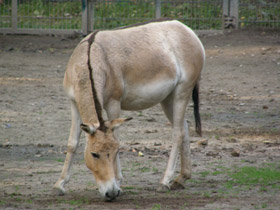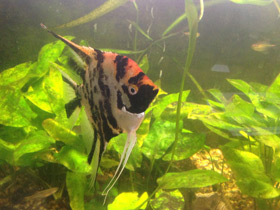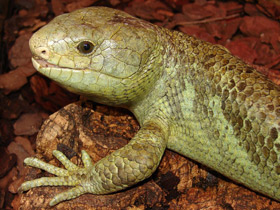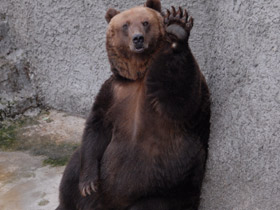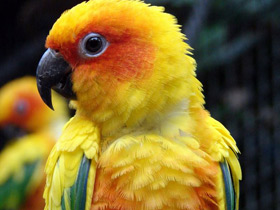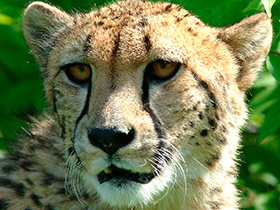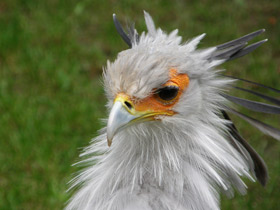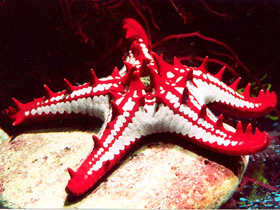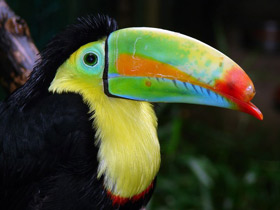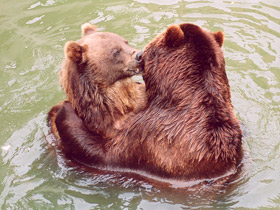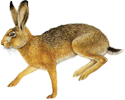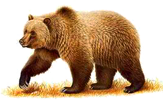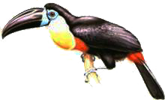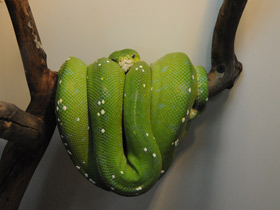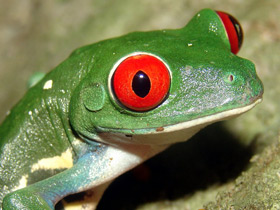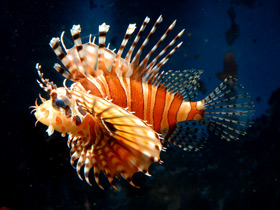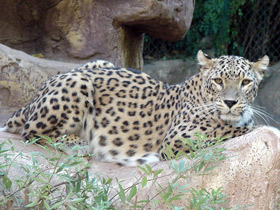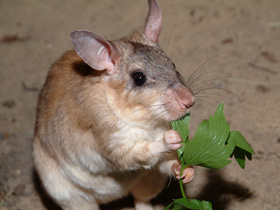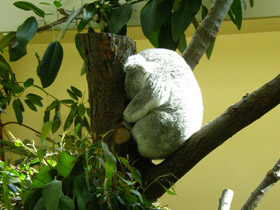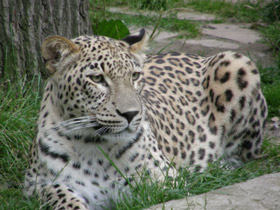The lowland streaked tenrec Hemicentetes semispinosus
The lowland streaked tenrec occurs in the eastern and northern parts of Madagascar. This tenrec is about 160 millimetres long, not including the tail, and weighs between 125 and 280 kg; the tail is rudimental. Streaked tenrecs inhabit tropical humid forests and forested areas, and also occur in agricultural lands. The lowland streaked tenrec is black with yellow stripes down its back. Each animal can dig a burrow consisting of nesting chamber located in the end of a tunnel which is 5 meters long and 5 to 1.5 centimeters deep; in some cases the burrow is used by a family group and the tunnel may be several meters long. Streaked tenrecs can climb trees but they do not do it often. The diet of these animals includes mainly earthworms; tenrecs use their long nose to get the earthworms living in the roots of grasses or under leaves. When a predator is near, the lowland streaked tenrec assumes a threatening pose, raising the quills on the top of the head and around the neck, and keeping its head low. The spines in the middorsal region are especially massive and may vibrate independently. Lowland streaked tenrecs use echolocation to find their prey.
Streaked tenrecs communicate using their stridulation organ that consists of 7 to 16 specialized spines. When the tips of these spines are rubbed together rapidly they produce high-frequency sounds that are thought to allow communication between members of foraging groups. It also helps animals to find mates in breeding season that lasts from September-October through December. Young are born from November to March, after the pregnancy period of 55-63 days. There are 2 to 4 young in the litter. Young streaked tenrecs develop fast; they follow their mother in a few days after birth, are able to eat earworms, snails, and other small invertebrates on the fifth day, and are completely weaned after 25 days. Young females reach sexual maturity by the age of five weeks. Lowland streaked tenrecs live as long as 30 to 36 months in captivity.









